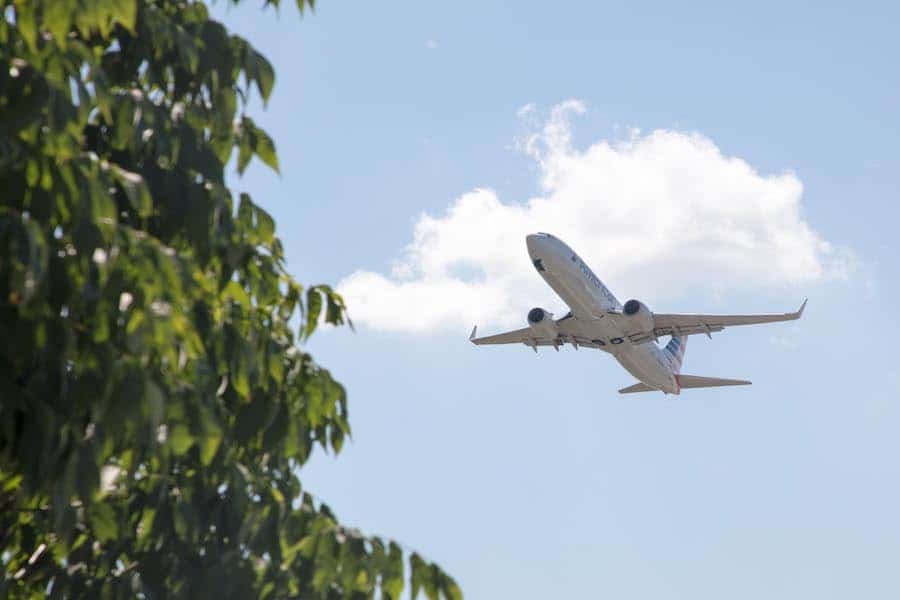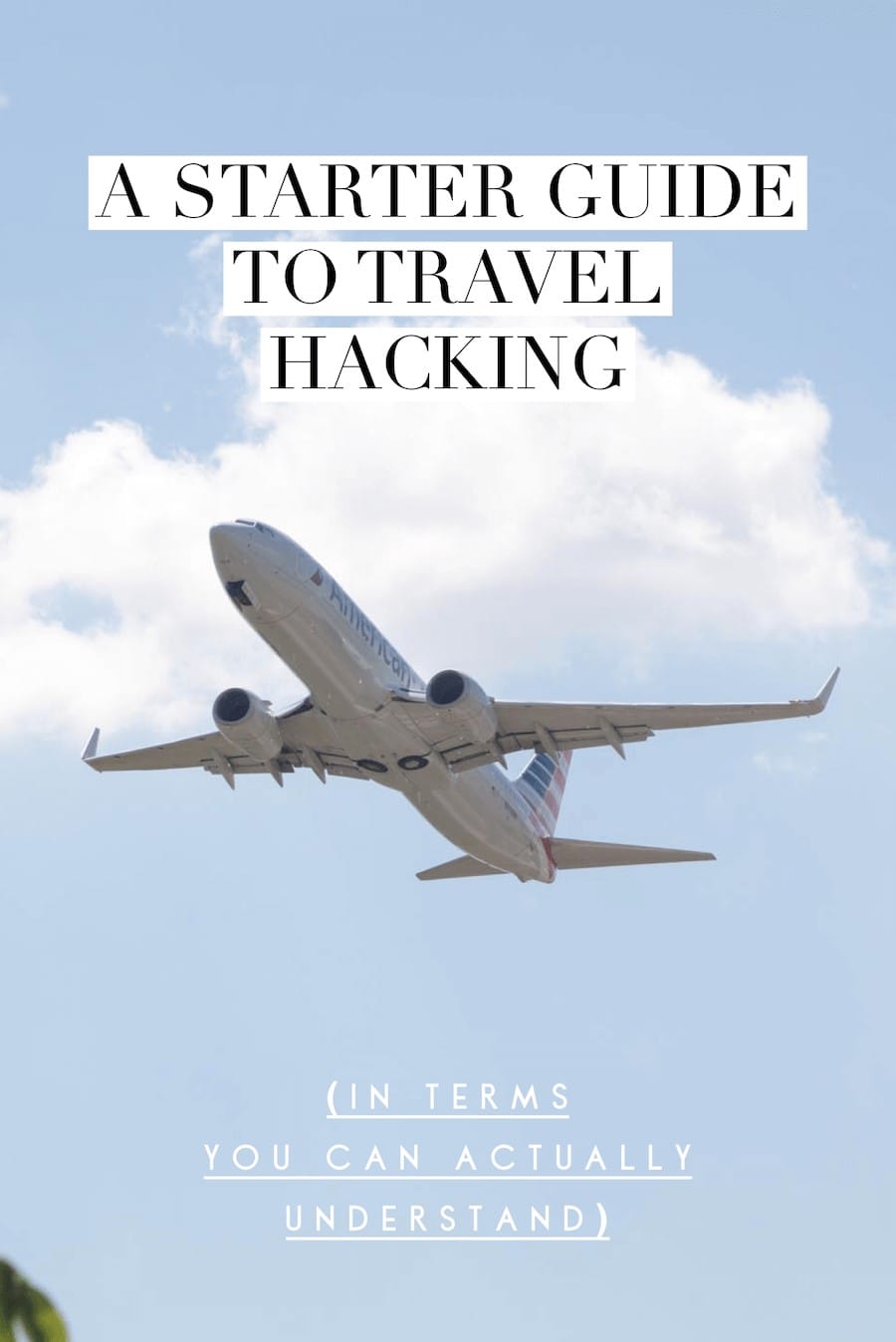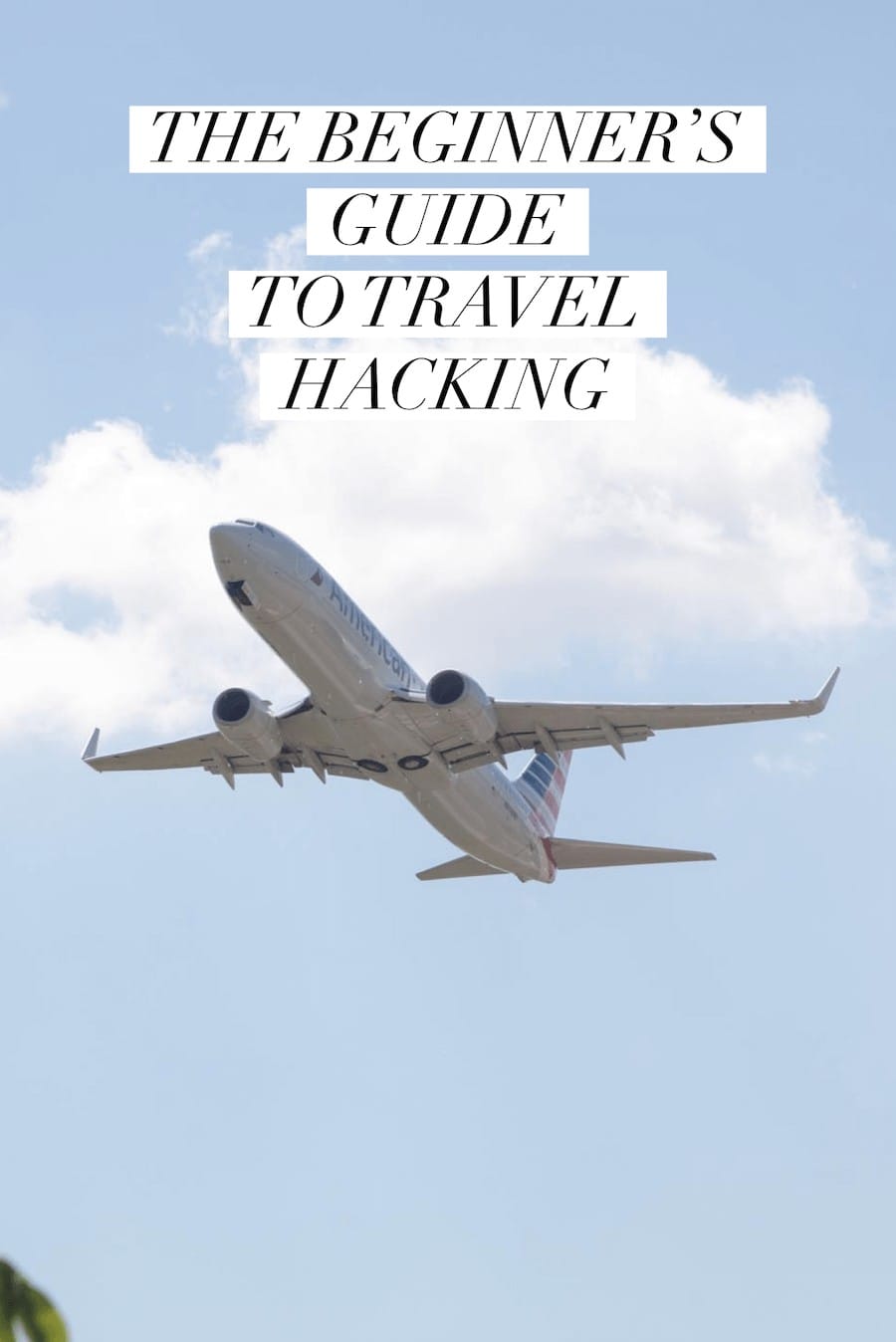Hi there! It’s Carly from 52 Cities, and I’m so excited to be guest posting on Live Like it’s the Weekend today to bring you this beginner’s guide to travel hacking and flying for free.
The world of frequent flier miles and credit card points can seem huge and overwhelming, but at the same time, it’s totally possible to start with the basics and learn as you go. And those basics are exactly what I’m here to dive into!
A Beginner’s Guide to Travel Hacking + Flying For Free
If you want to learn how to travel more this year, then getting savvy with the points and miles game is one of the best ways to jumpstart the process without spending a ton of extra money out of your own pocket.
Read on for an intro into the world of travel hacking, including the terms you need to know, an overview of how to earn free flights, and the biggest shortcut to free travel.
First of All, What the Heck is Travel Hacking?
Simply put, travel hacking is a term used to describe the practice of using travel rewards to book flights and hotel stays for free.
But while “hack” can sometimes mean finding a new or creative way to shortcut a process, in reality, that’s not what travel hacking is about. The systems and rewards programs that travel hackers use are all already in place and available to anyone who takes the time to learn them — and they’re totally legal.
Airlines, hotels and banks use these programs to encourage customer loyalty, and becoming a travel-hacking ninja is just a matter of understanding their rules and setting yourself up to capitalize.
Read More Travel Posts
20 Best Girls Trip Destinations to Book This Year
How to Earn Rewards on Boutique Hotels with Orbucks
How to Travel More This Year
Travel Hacking Terminology 101
Before we get too deep into this beginner’s guide for travel hacking, let’s go over some of the other major terms you’ll want to understand before moving forward:
Loyalty programs: Systems set up by banks, credit card companies, airlines and hotels to reward customers for their business—whether it’s using a credit card a bank issues, buying a flight from an airline or paying for a night at a hotel. The hope is that rewarding customers will keep them coming back again and again.
Points: A point is a unit of currency issued within a loyalty program to reward your business. These are what travel hackers collect; when you have enough, you can cash them in for free flights or hotel stays.
Miles: Miles are pretty similar to points, but they generally refer to the currencies used by airline loyalty programs. For example, Delta has SkyMiles, United has MileagePlus miles and American has AAdvantage miles. Banks and hotels, on the other hand, generally refer to their currencies as points. You may have heard of Chase Ultimate Rewards points, Hilton Honors points or Marriott Bonvoy points, just to name a few. Of course, there are exceptions: Southwest, though it’s an airline, uses Rapid Rewards points, while credit card issuer CapitalOne uses Venture Miles.
Transferable Points: Some types of points can only be used in one specific loyalty program. Take the Southwest Rapid Rewards points mentioned above—unsurprisingly, those can only be used to book flights through Southwest Airlines. But some types of points can be transferred to any loyalty program from a list of partners, giving you many more options for redeeming your points. Ever heard people talk about the Chase Sapphire cards? One reason they’re so popular is that the points they help people earn—called Chase Ultimate Rewards points—can be transferred to United, Hyatt, British Airways, Singapore Airlines, AirFrance-KLM and more.
Revenue flight/stay: This is a flight or hotel stay that you buy with cash.
Award flight/stay: This is a flight or hotel stay that you use your points or miles to pay for, either after earning them through a loyalty program or moving over some transferable points.
Award chart: This is a chart that tells you how many points or miles an airline or hotel chain will charge you for a free flight or room, depending on various factors.
Dynamic pricing: This is a term used to describe the way that airlines or hotel chains who don’t use award charts price their award flights and stays; with dynamic pricing, the cost of a flight or room in points can change any time, much the way airfare and hotel prices in money do.
How to Earn Points and Miles
Now that we’re clear on the terms, let’s talk about how to actually earn the points and miles that will score you free travel. There are actually lots of different ways to earn points and miles, and if you’re just starting out, there’s no need to worry about diving into all of them at once! You can always start with one or two strategies and add as you go. Here are the biggest and most beneficial methods to focus on:
Flying/staying: As I mentioned above, you’ll earn points and miles any time you pay for a flight or hotel night out of pocket, as long as you’re signed up for that airline or hotel’s loyalty program and attach your rewards number to your reservation.
Credit cards: This one is a biggie! As you may already know, credit cards are a key travel hacking tool. Credit card issuers award customers points or miles for each dollar they spend; how many points or miles you earn depends on the card you have and what its so-called “bonus categories” are. For example, some cards offer two, three or even four points per dollar spent at restaurants, while other cards may award you extra points for money spent on airfare, groceries or gas.
Shopping and dining: Many airlines and hotel chains have teamed up with retail partners and restaurants to help you earn points and miles just for shopping and dining with participating businesses. These points and miles are on top of what you’d earn for putting your purchases on a travel rewards credit card.
Partnerships and promotions: Beyond shopping and dining, there’s a whole web of partnerships out there you can leverage to earn points and miles toward free travel (for example, did you know you can earn Hilton Honors points with every Lyft ride you take?) Companies also frequently run promotions that can help you accelerate your earning.
The Fastest Way to Earn Points: Credit Card Sign-Up Bonuses
While I always recommend using a combination of these strategies above to make sure you’re capitalizing on your points-earning potential, there’s one method of earning that stands out above the rest as the quickest route to free travel: credit card sign-up bonuses.
A sign-up bonus is an offer from a travel rewards credit card issuer that promises a large sum of points—think as high as 50,000, 60,000 or beyond—if you hit a certain spending threshold within a set number of months after opening the card. Those thresholds unsurprisingly vary based on how large the bonus is; the more points you can earn, the more you’ll likely have to spend. These days, $3,000 or $4,000 in the first three months of card membership is pretty common for the top rewards cards.
If you’re reading this and thinking, “That sounds like much more than I’d ordinarily spend on a credit card in three months,” there are a few ways to get creative when it comes to hitting the bonus. One way is to time it with a big purchase you’ve been saving for—I hit my last sign-up bonus by putting down a deposit for a trip to Antarctica—or ask family or friends to put their purchases on your card and reimburse you.
If all else fails, some services that might normally require cash allow you to pay by credit card for a small fee (like paying your rent, for example). Normally, it’s not worth it to use a card, but considering the value of a huge sign-up bonus, this is one case where you might want to consider it!
Before you run to take out a travel rewards credit card, though, there are a few things to note: These cards carry extremely high interest rates, so unless you can pay off your balance in full every month—every. single. month—they’re not worth it, as what you’ll pay in fees will negate what you earn in rewards.
I’ve also known people to go out and take out a bunch of credit cards back-to-back in hopes of racking up enough points for a free trip in a short period of time. I personally only recommend taking out cards you intend to keep and use responsibly, as well as spacing out your applications by a few months or more. I think it goes without saying that taking out a bunch of credit cards at once might look suspicious to a card issuer, and banks are also cracking down on customers they suspect might be trying to game the rewards system.
FAQ
Q: Does taking out a travel rewards credit card hurt your credit?
A: No! It’s completely possible to have several credit cards—even upwards of 10—and have excellent credit. It’s all about how you use those cards once you have them: Additional credit cards can actually help your credit, as long as you’re using them responsibly over time.
Q: Is there any downside to using travel rewards credit cards?
A: If you’re interested in free travel, subbing in a points-earning credit card should be a no-brainer. It’s the simplest way to get rewarded for the purchases you would already be making anyway in your everyday life. There’s just one catch: These cards, by and large, come with annual fees starting at around $95 on the low end.
The good news? Most travel rewards credit cards come with more than just sign-up bonuses and points-earning potential through everyday spending. The most popular ones are loaded up with more perks than ever before, ranging from TSA PreCheck credits to lounge access to trip protections and car rental insurance.
In many cases, these perks far outweigh a card’s annual fee; it’s all just a matter of finding a card with a benefit profile that fits your needs and habits.
Q: Will I end up spending more money just to reap “free” rewards?
A: There’s a common misconception out there that getting into the points world will somehow entice you to spend more money than you normally would in order to earn rewards that aren’t actually free.
The reality is that yes, you will earn more points the more money you spend—but that doesn’t mean you have to spend any more than you already do in order to earn enough for a free trip. If you’re using the right tools, you should be able to travel for free just by maximizing the spending you’re already doing.
Q: Can you travel hack from anywhere in the world?
A: Yes! Most airlines and large hotel chains—not just U.S. based ones—have loyalty programs you can take advantage of, and you can use the same methods outlined above to earn points with those programs.
While it’s fair to say that the credit card offerings are not as diverse or as lucrative in other countries as they are in the U.S, that absolutely doesn’t mean you can’t use them to your advantage. There are tons of resources out there dedicated specifically to travel hacking from the U.K., Canada, Australia and so on!
Q: Travel hacking seems complicated. Is it all worth it?!
A: Is travel hacking the simplest hobby you can get into? Definitely not. But is it worth it? Absolutely. In the last five years, I’ve used points to travel to more international destinations than I can count—and certainly more than I could afford otherwise—including bucket list locales such as the Maldives, Italy, Hawaii, Argentina, Australia and so many more.
Hope you enjoyed this beginner’s guide to travel hacking! Stay tuned for more posts on how to use points and miles to travel for free.
Planning a trip right now? Don’t miss my go-to websites for booking everything from flights and tours, to accommodation and more:
- Booking.com for the best hotel deals
- World Nomads for flexible travel insurance
- VRBO for awesome rentals
- Skyscanner for finding the best flight deals
- Hostelworld for budget accommodation
- Rentalcars.com for easy car rentals















No Comments